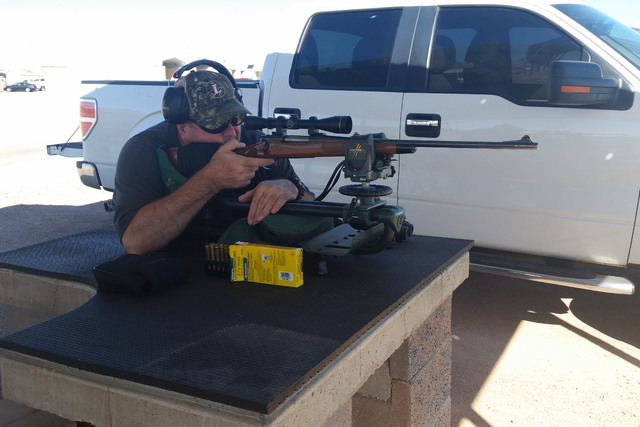Practice range makes perfect when breaking in new scope, rifle

For every hunter, there is probably at least one person who played a significant role in their development as an outdoorsman. For me, Uncle Doug is one of those people.
The man is quite the storyteller when he is in town, but set him next to a campfire somewhere in the wild and his stories rise to a new level, becoming things of legend. They will bring tears to your eyes. Just give him a few minutes to get wound up and the laughing soon begins.
Uncle Doug’s sense of outdoor humor, however, isn’t limited to storytelling. It can show up when you least expect it.
One year a bunch of us were on our way to the mountains of northern Utah for an elk hunt. As we neared our destination, we stopped at a small shooting range to check the status of our rifle scopes and to make sure they were still on the mark following our travels.
While the rest of us scavenged among used targets for something we could reasonably shoot at, Uncle Doug walked downrange and placed a soda can halfway up on the dirt mound behind the target line. We laughed and asked how he was going to sight-in his rifle with a can.
“Watch and learn,” he retorted. Then he squeezed the trigger on his rifle and the can jumped.
“Shoot the can. If it jumps, you go hunting, said Uncle Doug. Then he smiled and walked back to the truck.
While the jumping-can approach to sighting in a hunting rifle works for Uncle Doug, I still prefer to use a more methodical approach, as do most other experienced shooters. It takes some time, but the result is confidence in your firearm and your ability to use it when the time comes.
Because of a mishap during my last deer hunt, I recently purchased a new rifle scope. I had a local outdoor store mount and bore sight it, then I headed to the Boulder Rifle and Pistol Club. I put the scope and two brands of off-the-shelf ammunition to the test — Remington Core Lokt and Winchester Super X. Both were loaded with 150-grain bullets.
Since the rifle and scope already were bore sighted, I figured the bullets should hit somewhere on the paper with the first shot. That was a mistake. The first two rounds from the Remington cartridges hit about three feet to the right of my target at 100 yards. So I went old school and pulled the bolt from the rifle. Then, while looking through the bore from the breech end, I lined the barrel up with my target. To adjust the scope, I held the rifle firmly in place and turned the scope turrets until its crosshairs were on the target.
My next three shots were dead center vertically and about 6 inches to the left of center, but at least they were on paper. One click on the scope’s turret is equal to one-quarter-inch at 100 yards, so I turned the horizontal turret and counted 24 clicks to the right. And since I wanted the bullets to hit about 1½ inches high at that distance, I turned the vertical turret six clicks up. The next three shots were just right of center and in the ballpark vertically.
Following some small adjustments, the next three shots were 2 inches high and dead center horizontally. I could live with that.
Next I tried the Winchesters just to see which of the two rounds my rifles liked best. Though I didn’t expect the two brands to shoot exactly the same, I was surprised to find that the Winchesters hit as much as 2 inches higher on the target at the same distance than the Remington rounds. Still, my rifle seemed to like the Remingtons because they grouped better overall.
I was ready to go with the Remingtons until my friend Jed talked me into experimenting with the all-copper Barnes TSX bullets. Two weeks later, I showed up at the range with cartridges we hand-loaded with the Barnes offering in the 140-grain variety. With minor adjustments, shots 5, 6 and 7 passed through two holes you can cover with a nickel just above center.
All three bullets performed well, but guess which round I will be hunting my elk with come November.
There is more to sighting in a rifle than shooting a few rounds through a piece of paper. The process is an opportunity to get to know your firearm. And as this experience reminded me, it also is a chance to test different loads. Once you are happy with a particular cartridge, take the time to practice with it. For me, the coming weeks will include multiple trips to the silhouette range. The cost of practice will be worth it when you lay your lip over a venison or elk steak.
Freelance writer Doug Nielsen is a conservation educator for the Nevada Department of Wildlife. His “In the Outdoors” column, published Thursday in the Las Vegas Review-Journal, is not affiliated with or endorsed by the NDOW. Any opinions he states in his column are his own. He can be reached at intheoutdoorslv@gmail.com.